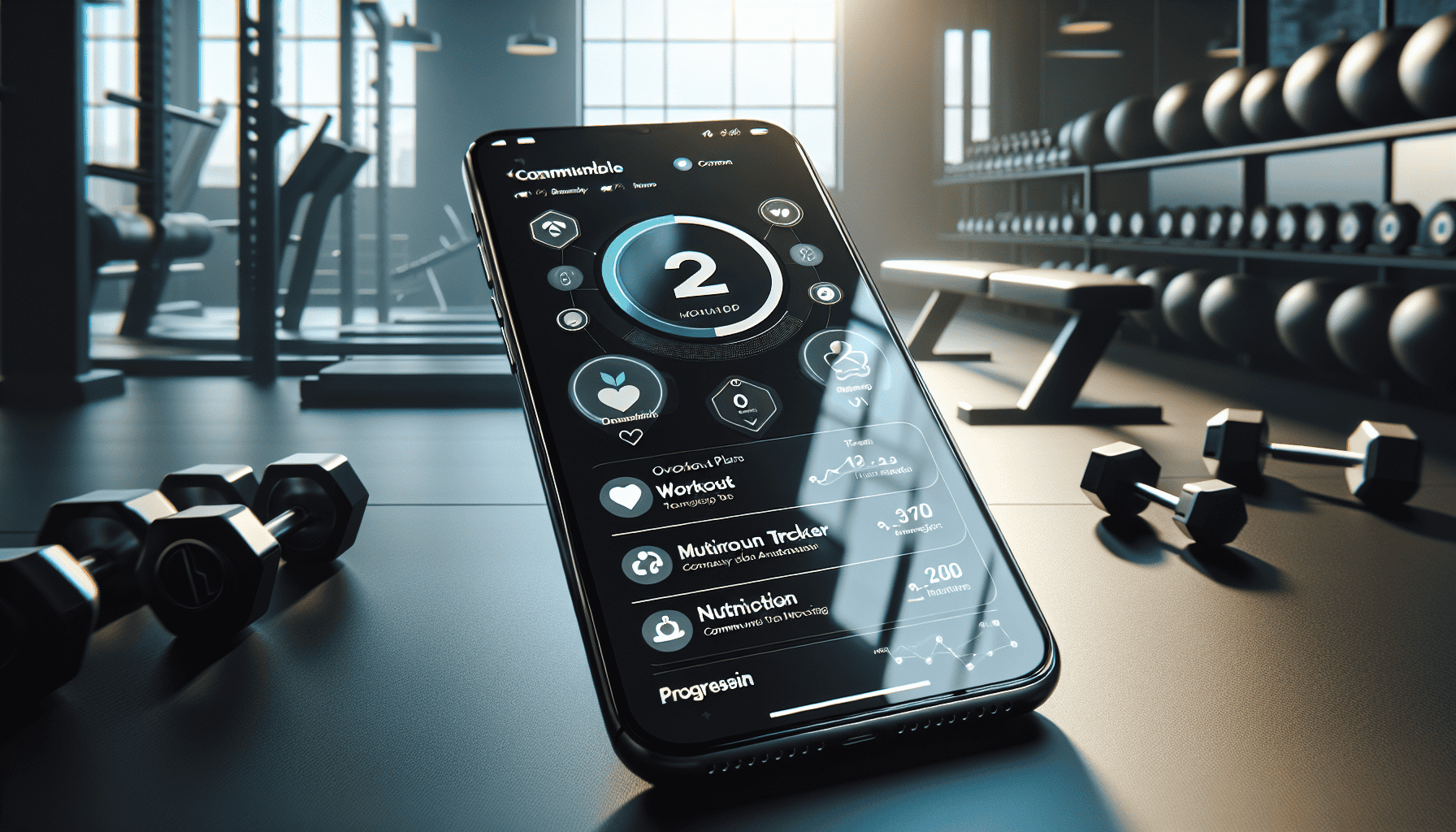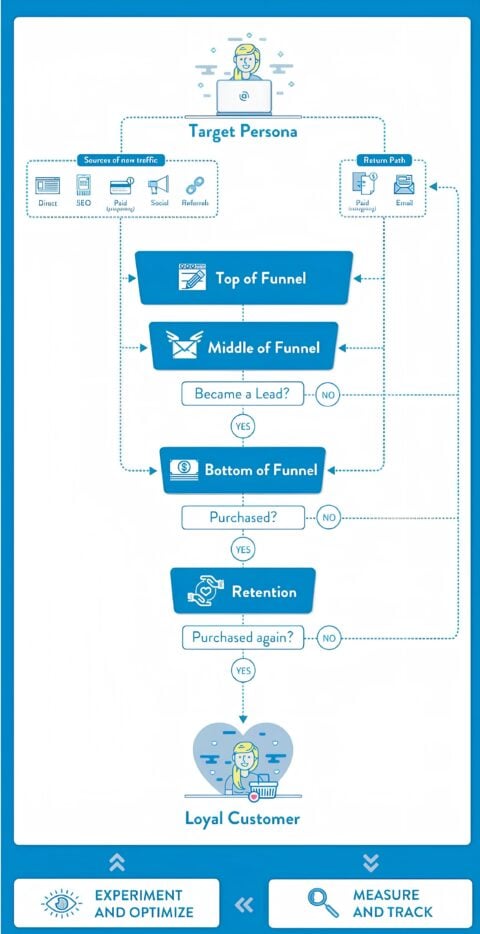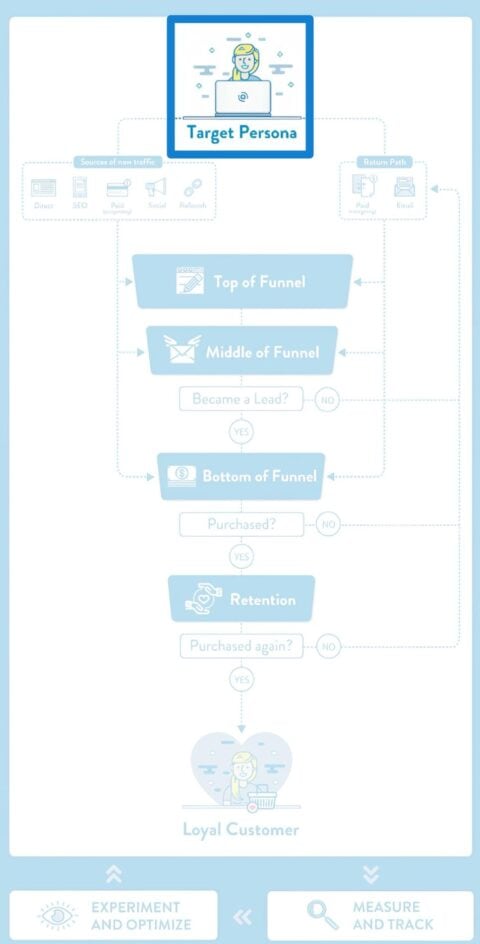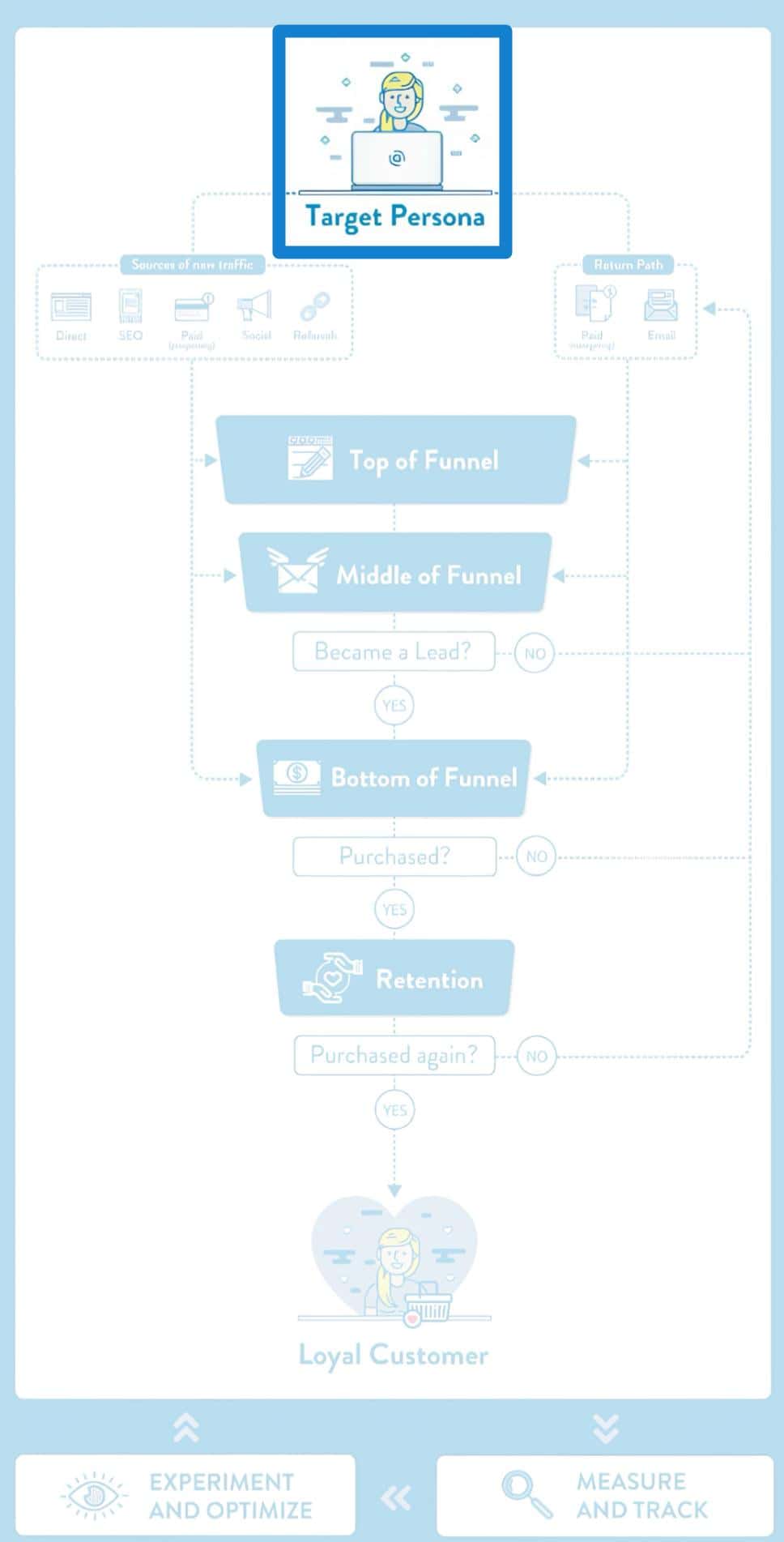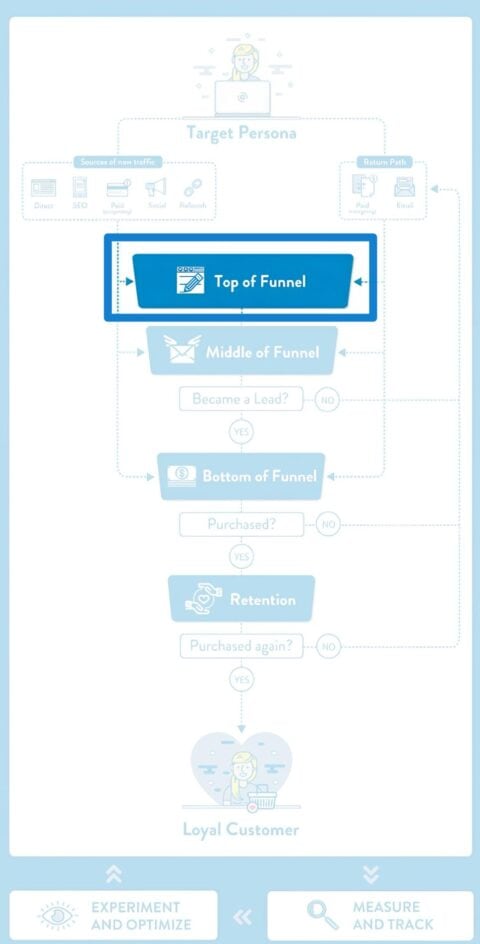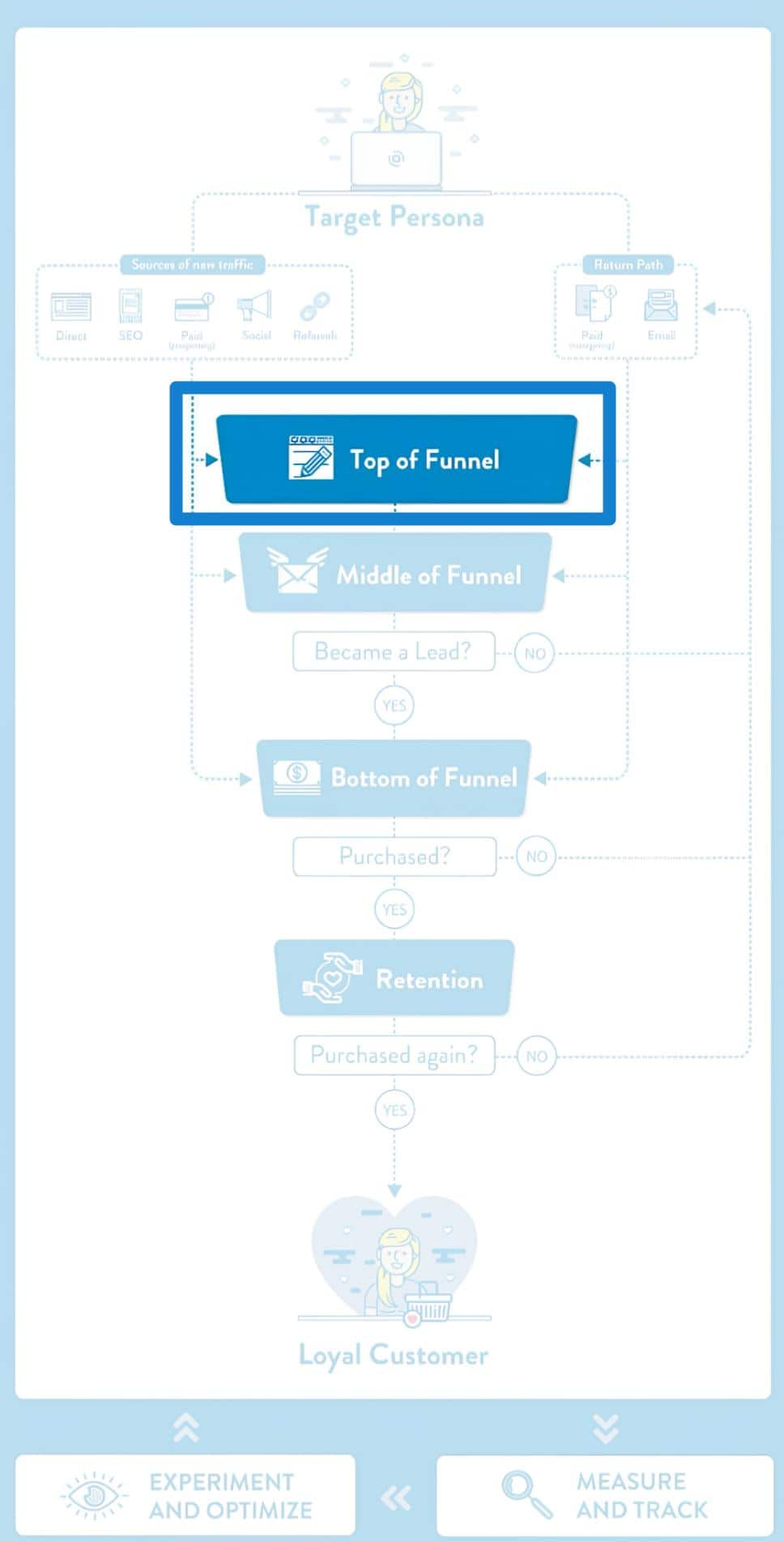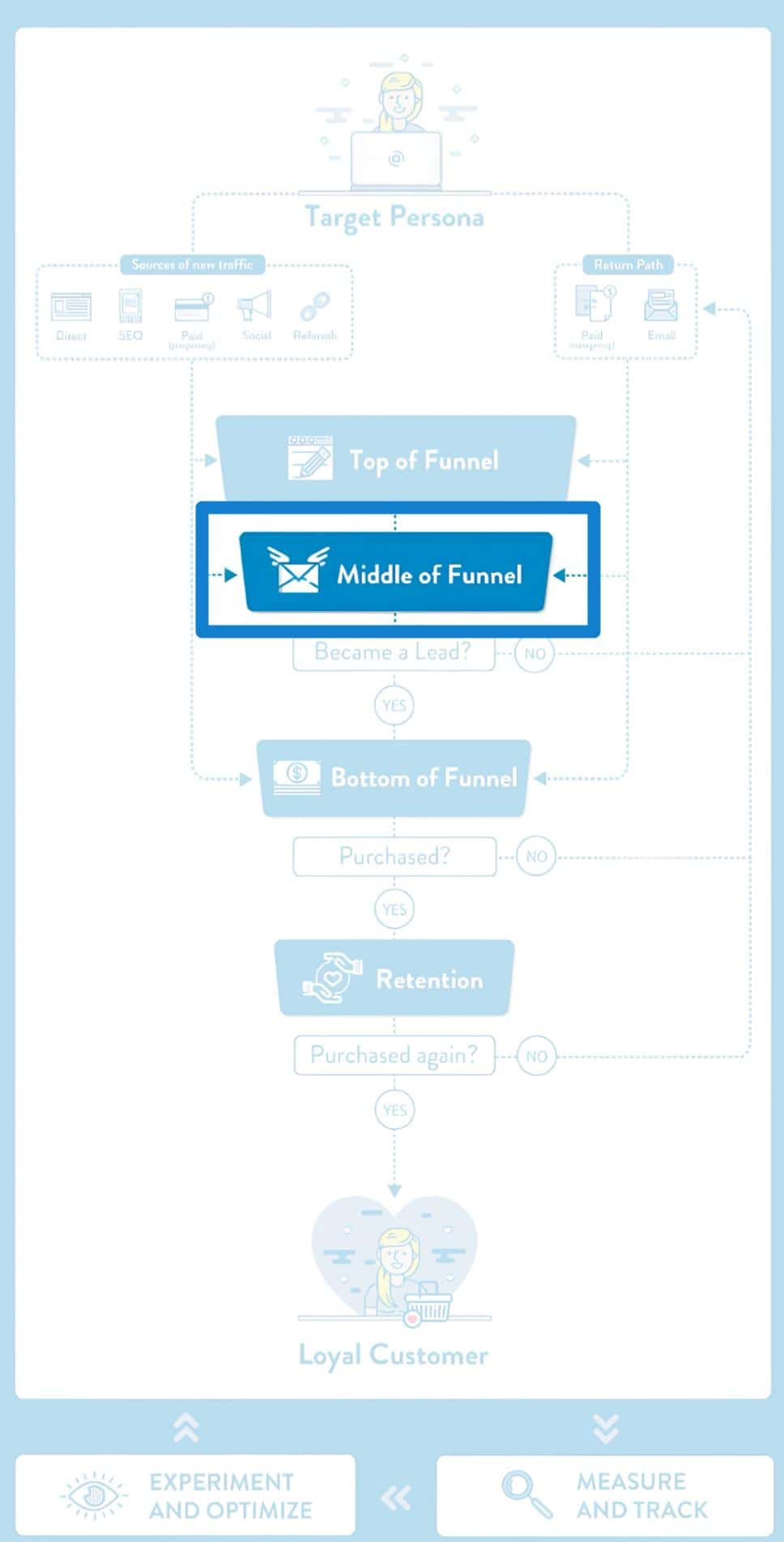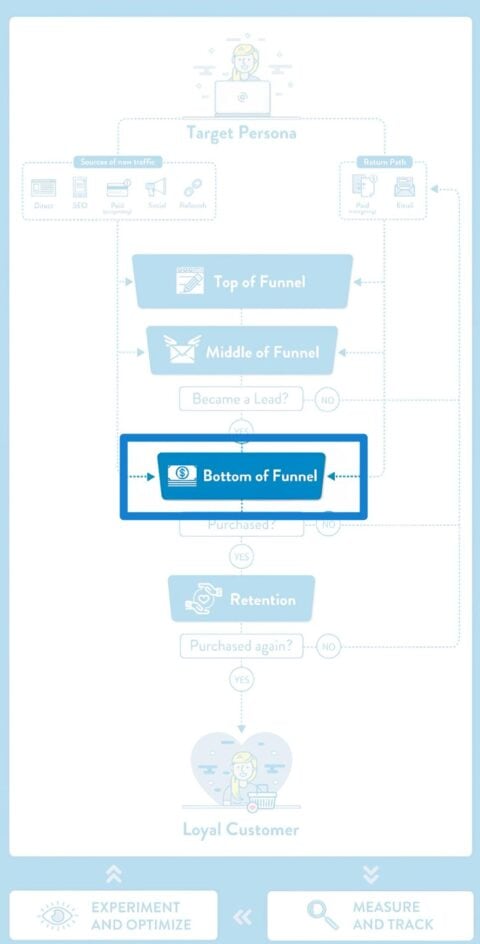📈
Your Goal at the Retention Stage: Increase Lifetime Value
In the retention stage, your marketing persona is already a customer of your product. Your objective is to increase the value you can extract from them directly by generating repeat purchases, upsells, or reducing churn; or indirectly by improving brand image or promoting referrals.
Customer lifetime value (CLV)
📝
Content Marketing
The objective of the content you'll create at the retention stage is to keep your existing customers happy by providing ongoing value (even after purchasing.)
Content ideas:
Monthly newsletter featuring updates on new app features, success stories from Fit Fiona and Busy Brian, and tips for maximizing the app's benefits.
Weekly video series: 'Workouts & Nutrition Tips for Continued Success' designed for users looking to maintain their fitness journey.
Engagement campaign: 'Share Your Progress' encouraging users to submit testimonials or successes, which can be featured in future marketing.
Exclusive webinar for premium subscribers on advanced fitness techniques and optimizing nutrition while balancing work-life demands.
Guides and resources focused on seasonal fitness challenges tailored for busy professionals, to encourage ongoing user commitment.
What to measure:
Open rates for newsletters
Engagement metrics on video views
Participation rates in engagement campaigns
🔎
SEO
At the bottom of the funnel, you'll want to make sure your marketing persona can find all the information she needs to get the most of your product (e.g. knowledge base articles), or to solve any problems that may arise (e.g. support/contact page.)
Keyword ideas:
Successful fitness app testimonials
Best practices for maintaining fitness long-term
Guide to optimizing nutrition for busy lifestyles
User stories around fitness success with the app
Long-term fitness tracking strategies
What to measure:
Organic traffic to retention-focused content
Keyword rankings for retention-related searches
Time spent on resource pages
🎯
Paid Advertising
At this stage of the funnel, you might choose to be run campaigns promoting of new features, upgrades, or promotions.
Target audience ideas:
[Remarketing] Facebook Ads: Target previous users who showed interest but didn't convert into long-term subscribers.
[Remarketing] Google Ads: Retarget users who accessed content related to success stories to encourage them to re-engage.
[Prospecting] Instagram Ads: Promote benefits of community support focusing on users like Fit Fiona and Busy Brian needing accountability.
[Remarketing] YouTube Ads: Reconnect with users who viewed 'success stories' videos but have not subscribed.
[Remarketing] Facebook Ads: Audience targeting based on previous interactions with newsletter and blog content promoting retention strategies.
What to measure:
Click-through rate (CTR) of remarketing ads
Percentage of returning users from ads
📱
Social Media
Retention campaigns on social media revolve around building a sense of community with your existing customers. You'll do a lot of monitoring of brand mentions on social media.
Social media campaign ideas:
Monitoring and responding to social media mentions of the app to engage users and strengthen community ties.
Weekly social media challenges encouraging users to share their fitness journeys on Instagram, featuring hashtags related to progress.
Create polls about future content users want to see to better align with community interests and boost engagement.
Monthly live chats/Q&A sessions with fitness experts sponsored by the app, to foster a sense of community among users.
Showcase user-generated content celebrating long-term fitness successes with the app to inspire and motivate others.
What to measure:
Engagement rate on user-generated content
Number of social mentions
Community interaction in live events
📧
Email Marketing
Retention email campaigns will be a mix of educational emails (onboarding, activation, etc), transactional emails (reports, receipts, reminders, etc), and promotional emails (upgrades, upsells, etc.)
Email marketing campaign ideas:
Monthly follow-up email highlighting feature updates, special events, and exclusive tips for users.
User satisfaction survey email to gather feedback on app performance and areas for improvement.
Re-engagement email campaign targeting inactive users with personalized recommendations based on past usage.
Exclusive early access email for premium features or functionalities for loyal subscribers.
Success story features in newsletters featuring users achieving significant milestones, reinforcing the app's effectiveness.
What to measure:
Open rates on re-engagement emails
Feedback scores from user satisfaction surveys
Click-through rates on exclusive offers
🧪
Marketing Experiments
Your retention experiments will have the objective of maximizing lifetime value of existing customers.
Experiment ideas:
A/B test subject lines for newsletters to see which resonates more with subscribers.
Experiment with different email formats (e.g., text vs. visually rich) to improve engagement in retention emails.
Analyze app usage data to identify points where users struggle and enhance the onboarding experience.
Test varying lengths and types of content in follow-up communication to determine user preference for wordiness.
Split-test push notifications for reminders to use the app to see what drives better retention.
What to measure:
Conversion rates on re-engagement campaigns
Churn rates post-optimization efforts
